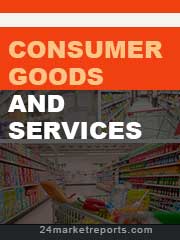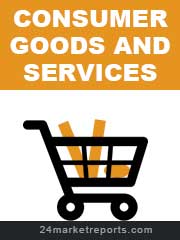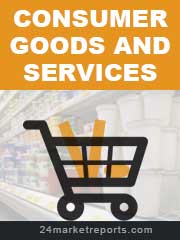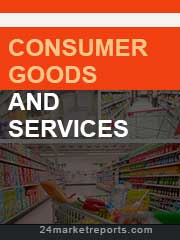
Download FREE Report Sample
Download Free sampleMARKET INSIGHTS
Global glass packaging for pharmaceutical market was valued at USD 5,232 million in 2024. The market is projected to grow from USD 5,611 million in 2025 to USD 8,622 million by 2032, exhibiting a CAGR of 7.6% during the forecast period. While North America remains the dominant regional market, Asia-Pacific is expected to witness the fastest growth due to expanding pharmaceutical manufacturing capabilities in countries like India and China.
Glass packaging plays a critical role in pharmaceutical product integrity by providing superior barrier properties, chemical inertness, and sterilization compatibility. Primary glass packaging formats include cartridges, glass vials, and ampoules - each designed for specific drug delivery requirements. Type I borosilicate glass dominates premium applications due to its exceptional thermal and chemical resistance, representing over 60% of pharmaceutical glass packaging materials according to industry standards.
The market growth is driven by increasing biologics production requiring specialized containment solutions, stringent regulatory requirements for drug safety, and rising global healthcare expenditure. Recent capacity expansions by key players like Gerresheimer and Schott AG address growing demand, particularly for biologics packaging. However, alternative materials and supply chain vulnerabilities present challenges that industry participants are addressing through technological innovations and regional production strategies.
Escalating Demand for Injectable Drugs Fueling Market Expansion
The global pharmaceutical glass packaging market is experiencing robust growth driven by increasing demand for injectable drugs and biologics. Injectable drug formulations require superior protection against contamination and chemical interactions, making glass the material of choice. With the biologics market projected to grow significantly, accounting for over 30% of all pharmaceutical products, the need for reliable glass packaging solutions has intensified. Major companies are expanding production capacities; for instance, leading manufacturers have announced multi-million dollar investments in new vial production lines to meet the surging demand for COVID-19 vaccines and other critical medications.
Stringent Regulatory Standards for Drug Safety Driving Adoption
To know more about market statistics, Download a FREE Sample copy
Pharmaceutical regulators worldwide continue to enforce rigorous standards for drug packaging materials, particularly for sensitive biologics and injectables. Glass remains preferred due to its exceptional chemical inertness and ability to maintain product sterility. Recent regulatory guidelines have further emphasized the importance of high-quality primary packaging, with specifications for hydrolytic resistance and delamination risk becoming more stringent. This regulatory landscape is compelling pharmaceutical companies to invest in premium glass packaging solutions, with boronosilicate glass emerging as the gold standard for many critical applications.
➤ For instance, Type I borosilicate glass now accounts for over 60% of pharmaceutical glass packaging for injectables due to its superior performance characteristics.
Furthermore, the growing emphasis on patient safety and drug efficacy is prompting manufacturers to develop innovative glass solutions with enhanced barrier properties and reduced potential for interaction with drug formulations.
Rising Competition from Alternative Materials Posing Growth Challenges
While glass remains dominant for pharmaceutical packaging, alternatives such as advanced polymers and hybrid materials are gaining traction, particularly for non-injectable applications. These materials offer advantages including reduced breakage risk and lighter weight, making them attractive for certain applications. Plastic containers now account for approximately 15-20% of primary pharmaceutical packaging, with growth rates outpacing glass in some segments. The development of high-barrier plastic formulations with improved chemical resistance continues to challenge glass's traditional stronghold in the market.
Energy-Intensive Manufacturing Process Limiting Cost Competitiveness
The glass manufacturing process requires significant energy inputs, with furnace operations accounting for substantial production costs. Recent energy price volatility has squeezed margins for glass packaging manufacturers, with production costs increasing significantly. While technological advancements have improved energy efficiency, the fundamental nature of glass manufacturing remains energy-intensive compared to alternative materials. This cost pressure is particularly challenging in price-sensitive markets and for generic drug manufacturers operating with tight margins.
Emerging Markets Present Significant Growth Potential
The pharmaceutical industry's expansion in developing economies offers substantial opportunities for glass packaging providers. Countries across Asia and Latin America are witnessing rapid growth in local drug production and healthcare infrastructure development. India's pharmaceutical market, for example, is expected to grow significantly, with domestic manufacturers increasingly adopting international quality standards that require premium glass packaging solutions. This geographic expansion creates new avenues for market growth beyond traditional Western markets.
Innovation in Specialty Glass Formats Opening New Applications
Technological advancements in glass formulation and manufacturing are creating opportunities in high-value segments. The development of coated glass solutions that minimize drug-container interactions, along with innovations in ready-to-use packaging systems, are gaining traction. The market for pre-filled syringes, which require specialized glass formulations, is growing particularly fast, with demand increasing by over 10% annually. These high-value applications command premium pricing and represent an important growth vector for manufacturers.
Supply Chain Vulnerabilities Impacting Market Stability
The pharmaceutical glass packaging industry faces significant supply chain challenges, including raw material shortages and logistics disruptions. The specialized nature of pharmaceutical-grade sand and other inputs creates bottlenecks, while global shipping constraints have impacted delivery timelines. These challenges were particularly evident during the pandemic when vaccine packaging demand surged unexpectedly. Industry players are now investing in supply chain diversification and strategic inventory management to mitigate these risks.
Sustainability Pressures Requiring Substantial Investment
Environmental concerns present both challenges and opportunities for glass packaging providers. While glass is inherently recyclable, the industry faces pressure to reduce its carbon footprint and improve circular economy practices. Meeting these sustainability goals requires substantial capital investment in cleaner production technologies and closed-loop recycling systems. The transition to more sustainable operations comes with significant upfront costs that may strain profitability in the short to medium term, particularly for smaller manufacturers.
Glass Vials Segment Dominates the Market Due to Extensive Use in Injectable Drugs
The market is segmented based on type into:
Cartridges
Glass Vials
Subtypes: Type I, Type II, and Type III
Ampoules
Others
Injectable Segment Leads Due to Rising Demand for Biologics and Specialty Drugs
The market is segmented based on application into:
Injectable
Transfusion
Other
Borosilicate Glass Holds Major Share Owing to Superior Chemical Resistance
The market is segmented based on material into:
Borosilicate Glass
Subtypes: 3.3 and 5.0
Amber Glass
Others
Contract Manufacturers Segment Growing Rapidly Due to Increasing Outsourcing Trends
The market is segmented based on end user into:
Pharmaceutical Companies
Biotechnology Companies
Contract Manufacturers
Others
Market Leaders Driving Innovation in Pharma Glass Packaging Solutions
The global glass packaging for pharmaceutical market features a mix of established multinational players and regional specialists competing across product quality, technological innovation, and supply chain efficiency. Gerresheimer and Schott currently dominate the market landscape, collectively accounting for a significant revenue share in 2024. These European powerhouses benefit from decades of expertise in borosilicate glass production and strengthened their positions through strategic acquisitions like Schott's 2023 expansion of its Indian manufacturing facilities.
Stevanato Group has emerged as a formidable competitor, particularly in high-value segments like pre-sterilized ready-to-use vials. The company's 2024 investment in next-generation molding technologies demonstrates its commitment to maintaining technological leadership. Meanwhile, West Pharmaceutical Services continues to leverage its dual expertise in polymer and glass packaging, offering pharma companies hybrid containment solutions.
The competitive landscape shows increasing regionalization trends, with Asian players like Shandong PG and Nipro Corporation gaining market share through cost-competitive offerings and localized production. However, stringent regulatory requirements for high-end pharmaceutical packaging continue to favor established European and American manufacturers with proven quality systems.
Gerresheimer AG (Germany)
Schott AG (Germany)
Stevanato Group (Italy)
Shandong Pharmaceutical Glass Co., Ltd. (China)
SGD Pharma (France)
Nipro Corporation (Japan)
Ardagh Glass Packaging (Luxembourg)
Bormioli Pharma S.p.A. (Italy)
Sisecam Group (Turkey)
Corning Incorporated (U.S.)
PGP Glass (India)
Zhengchuan Pharmaceutical Packaging (China)
Stoelzle Glass Group (Austria)
Chengdu Jinggu Glass Products (China)
The global pharmaceutical glass packaging market is witnessing robust growth, driven by increasing demand for sustainable and chemically inert packaging solutions. Glass remains the preferred material for pharmaceutical packaging due to its impermeability, non-reactive nature, and ability to maintain the integrity of sensitive drugs. With the market valued at $5,232 million in 2024 and projected to reach $8,622 million by 2032, the sector is growing at an impressive CAGR of 7.6%. This growth is further fueled by stricter regulatory requirements ensuring drug safety, particularly for biologics and high-value injectables, where glass vials and ampoules dominate usage.
Rise of Specialty Glass Formulations
Pharmaceutical companies are increasingly adopting borosilicate and aluminosilicate glass for enhanced chemical resistance and thermal shock stability. Type I borosilicate glass, which significantly reduces leaching risks, accounts for over 60% of primary packaging in injectable drugs. Manufacturers are also investing in coated glass solutions to mitigate delamination risks, ensuring safer drug storage for sensitive biologics and mRNA-based therapies. Such innovations align with the industry's shift toward higher-value, long-term drug formulations.
The Asia-Pacific region, led by China and India, is emerging as a key growth area due to expanding domestic pharmaceutical manufacturing capabilities. China's pharmaceutical packaging sector is expected to grow at over 8% annually, driven by government initiatives promoting local API production. Meanwhile, established markets like North America and Europe continue to adopt advanced modular packaging lines to meet Good Manufacturing Practice (GMP) standards. Localized production facilities are increasingly prioritized to reduce supply chain vulnerabilities, as seen in recent expansions by Gerresheimer and Schott in emerging markets.
North America
The North American pharmaceutical glass packaging market is driven by stringent FDA regulations ensuring drug safety and a robust biopharmaceutical industry. The U.S. dominates regional demand, accounting for over 80% market share, backed by increasing production of injectable drugs and biologics. Rising preference for Type I borosilicate glass due to its superior chemical resistance and minimal interaction with drug formulations is accelerating adoption. Gerresheimer and Corning Incorporated lead innovation with high-performance vials for mRNA vaccines and specialty drugs. Challenges include competition from alternative packaging materials, but glass remains irreplaceable for sensitive biologics.
Europe
Europe’s market thrives on strict EU pharmacopeia standards mandating glass packaging for critical therapeutics like vaccines and insulin. Germany and France are key demand hubs, with Schott AG and SGD Pharma investing in sustainable production. The region prioritizes recyclability, with over 70% of glass packaging being recycled—a key differentiator from plastic. However, rising energy costs and carbon-neutral production targets are pushing manufacturers to adopt furnace electrification. The ampoules segment remains strong for high-value injectables, though regulatory complexity slows novel packaging approvals.
Asia-Pacific
Asia-Pacific is the fastest-growing market, propelled by China and India’s expanding generic drug production. China’s "Volume-Based Procurement" policy has intensified glass vial demand, with Shandong PG and Chengdu Jinggu capturing domestic supply chains. India’s vaccine manufacturing boom—contributing to 60% of global vaccine supply—fuels glass ampoule consumption. While cost-sensitive markets still use Type III soda-lime glass, progressive shifts toward borosilicate for biologics are evident. Challenges include inconsistent quality standards and fragmented local competitors, but multinationals like Stevanato Group are expanding through partnerships.
South America
This region shows moderate growth, with Brazil leading due to its burgeoning pharmaceutical industry and government healthcare initiatives. The market relies heavily on imports, as local production is limited to basic vials. Economic volatility and currency fluctuations deter large-scale investments in advanced packaging. However, increasing chronic disease prevalence (e.g., diabetes) drives demand for insulin cartridges and pre-filled syringes. Regulatory harmonization with international standards could unlock opportunities, but infrastructure gaps persist.
Middle East & Africa
The MEA market is nascent but rising with pharma sector investments in UAE and Saudi Arabia, supported by diversification from oil economies. Local production is minimal, relying on imports from Europe and Asia. Vaccine deployment programs (e.g., Africa CDC’s initiatives) are boosting glass vial demand, though cold-chain limitations hinder biologics adoption. Sustainability is a low priority due to weak regulations, but multinationals like Bormioli Pharma see long-term potential for high-value玻璃 packaging in specialty therapeutics.
This market research report offers a holistic overview of global and regional markets for the forecast period 2025–2032. It presents accurate and actionable insights based on a blend of primary and secondary research.
✅ Market Overview
Global and regional market size (historical & forecast)
Growth trends and value/volume projections
✅ Segmentation Analysis
By product type or category
By application or usage area
By end-user industry
By distribution channel (if applicable)
✅ Regional Insights
North America, Europe, Asia-Pacific, Latin America, Middle East & Africa
Country-level data for key markets
✅ Competitive Landscape
Company profiles and market share analysis
Key strategies: M&A, partnerships, expansions
Product portfolio and pricing strategies
✅ Technology & Innovation
Emerging technologies and R&D trends
Automation, digitalization, sustainability initiatives
Impact of AI, IoT, or other disruptors (where applicable)
✅ Market Dynamics
Key drivers supporting market growth
Restraints and potential risk factors
Supply chain trends and challenges
✅ Opportunities & Recommendations
High-growth segments
Investment hotspots
Strategic suggestions for stakeholders
✅ Stakeholder Insights
Target audience includes manufacturers, suppliers, distributors, investors, regulators, and policymakers
-> Key players include Gerresheimer, Schott, Stevanato Group, Shandong PG, SGD, Nipro, Ardagh, Bormioli Pharma, West Pharmaceutical, and Sisecam Group, among others.
-> Key growth drivers include rising pharmaceutical production, increasing demand for biologics, stringent regulatory requirements for drug packaging, and growing preference for sustainable packaging solutions.
-> North America holds the largest market share, while Asia-Pacific is expected to witness the fastest growth due to expanding pharmaceutical manufacturing in China and India.
-> Emerging trends include development of specialty glass formulations, smart packaging with tracking capabilities, and increased adoption of automation in glass packaging production.

Speak to our Custom Research Team and get the Custom Research in a budget
Custom ResearchFrequently Asked Questions ?
A license granted to one user. Rules or conditions might be applied for e.g. the use of electric files (PDFs) or printings, depending on product.
A license granted to multiple users.
A license granted to a single business site/establishment.
A license granted to all employees within organisation access to the product.
Upto Working 24 to 48 hrs
Upto 72 hrs max - Weekends and Public Holidays
Online Payments with PayPal and CCavenue
Wire Transfer/Bank Transfer
Hard Copy




 Industry Market Size
Industry Market Size SWOT Analysis
SWOT Analysis Industry Major Players
Industry Major Players Revenue Forecasts
Revenue Forecasts Historical and Forecast Growth
Historical and Forecast Growth Profitability Analysis
Profitability Analysis
























